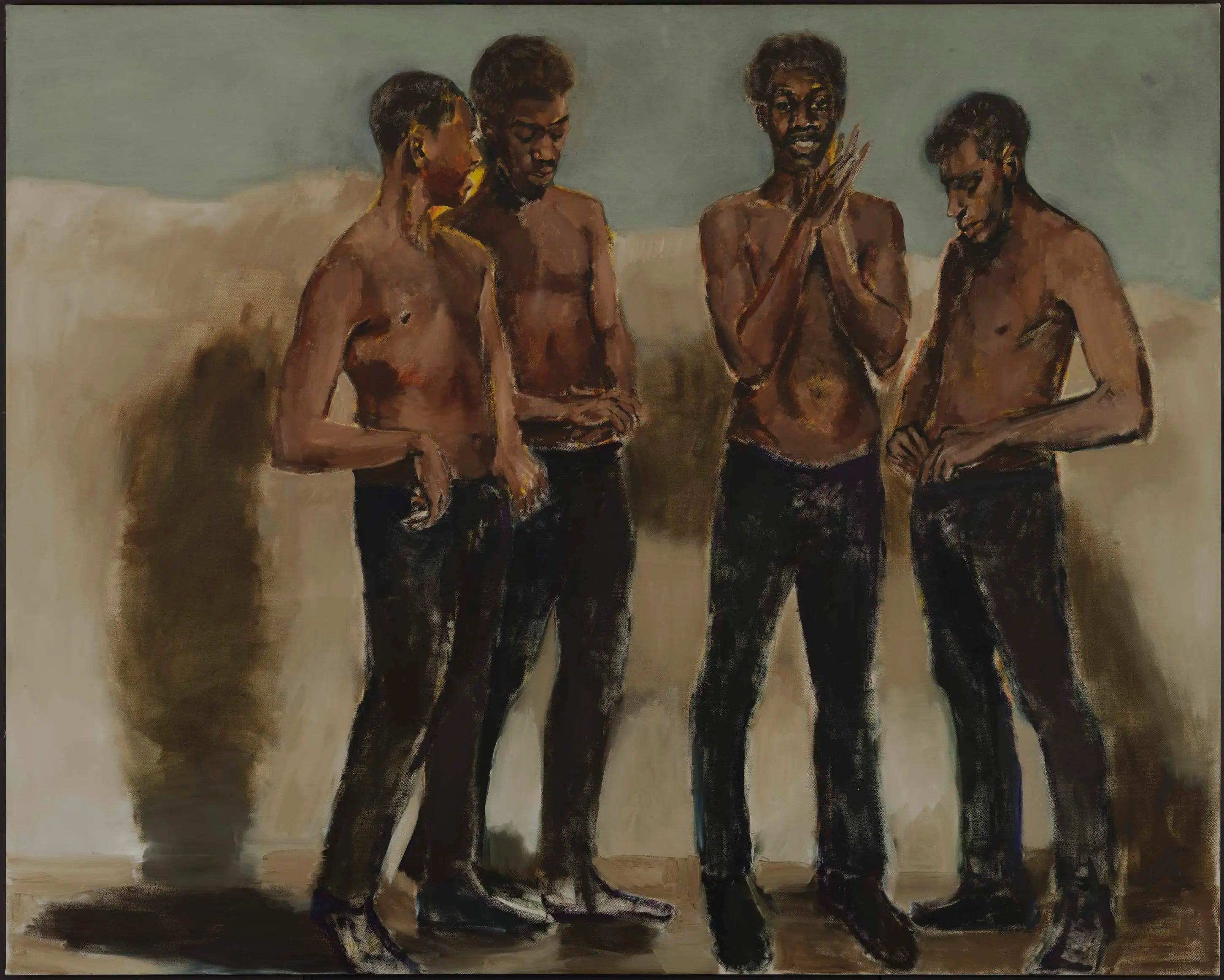At first glance, Lynette Yiadom-Boakye’s portraits exude a silent force. Fictional characters, born of her imagination, stare at the viewer with an almost palpable intensity. These black figures, painted in oil with a mastery inherited from the masters of the 19th century, pose an essential question: where is their place in the history of art? The answer, according to the British artist of Ghanaian origin, lies in a rewriting of codes, where each canvas becomes a new page.
An identity forged between London and Ghana
Born in 1977 in London, Yiadom-Boakye grew up in a Ghanaian home where African stories and culture intertwined with British life. These influences informed her view of the world. A graduate of the prestigious Royal Academy School, she quickly found her artistic language: a figurative painting that was both familiar and unsettling. While she drew inspiration from the classical compositions of Édouard Manet or the dancers of Edgar Degas, she diverted them to include black characters in noble frames, thus erasing the stereotypes associated with their representation.
She often explains that her works do not tell specific stories. Yet each painting carries a mystery. “People ask me who they are,” she confides in an interview, “when they should ask what they are.” They are “suggestions of people,” neither real nor fictional, individuals beyond time and space, who defy the viewer’s expectations.
A political painting, without slogans
Lynette Yiadom-Boakye does not seek to impose a militant reading of her works. But the very act of representing black figures in formats once reserved for white elites is eminently political. At a time when figurative painting seemed dominated by a homogenous Western aesthetic, she reinscribed black bodies at the heart of the artistic narrative, asserting their legitimacy and beauty.
“My art is political, whether we like it or not,” she says in one of her rare public interviews. She has never needed grand speeches to get her message across: her brushes are enough. Her paintings, often exhibited in major institutions such as MoMA or the Louis Vuitton Foundation, are places of silent dialogue, where the viewer is invited to rethink the place of the black community in history.
A classic technique at the service of the contemporary
What is striking about Yiadom-Boakye is the technical mastery of her works. Against dark and rich backgrounds, she plays with textures and shades of ochre and brown, recalling the palettes of the old masters. Her characters, with their natural poses, seem to come straight from a bygone era. However, upon closer inspection, there is an undeniable modernity. The clothes do not refer to any specific era, and the characters' attitudes reflect a fluid contemporaneity.
Yiadom-Boakye does not paint from models. Her subjects are born from her imagination and her observations of everyday life. She is also inspired by musicians like Miles Davis or Prince, whose audacity resonates in her painting. This process frees her works from the constraints of realism, giving them a universal dimension.
Since devoting herself full-time to painting in 2006, Lynette Yiadom-Boakye has had a string of prestigious exhibitions. In 2013, she was a finalist for the Turner Prize, a recognition that catapulted her career. She has exhibited at the Venice Biennale, Tate Britain and Moderna Museet. In 2021, one of her works, Diplomacy III , sold for nearly two million dollars, confirming her status as a star of the contemporary art market.
However, the artist remains discreet in the face of this recognition. Her studio in Bethnal Green, in east London, remains her sanctuary, where she continues to paint away from the spotlight. She also writes poems and novels, which she considers a natural extension of her visual work.
She asks questions that are both disturbing and liberating: why have the canons of beauty and power remained white for so long? Why have black figures only been included in art history as secondary subjects or in contexts of servitude? With her enigmatic portraits, she claims a space of dignity and presence.
His work is part of a broader movement, alongside artists like Kehinde Wiley, who are reimagining the codes of the representation of power. But where Wiley opts for baroque and flamboyant compositions, Yiadom-Boakye favors introspection and mystery. His characters, often alone or in the company of animals, evoke inner stories, invisible worlds.
What do we learn from his journey?
Lynette Yiadom-Boakye’s success is a reminder that art remains a powerful tool for reinventing narratives. Through her work, she invites viewers to reflect deeply on identity, history, and politics. But she also reminds us that art, even at its most engaged, can retain an element of poetry and mystery.



Share: